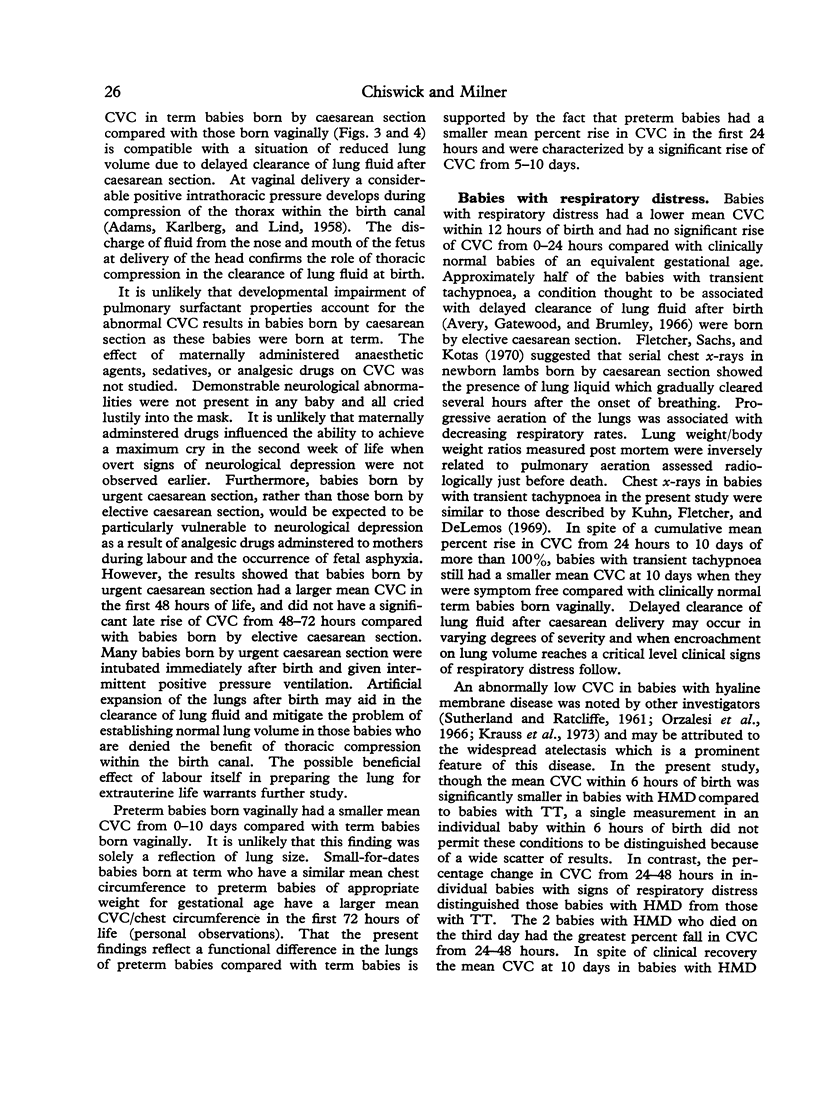Abstract
Serial measurements of crying vital capacity (CVC), expressed as ml/cm chest circumference, were made by reverse plethysmography during the first 2 weeks of life. Clinically normal babies born at term by elective caesarean section had a smaller mean CVC in the first 2 weeks of life compared with clinically normal term babies born vaginally. In contrast, no significant difference was shown between the mean CVC in term babies born vaginally and those born by urgent caesarean section. Clinically normal term babies born by caesarean section (elective and urgent) had a smaller mean percentage rise of CVC in the first 24 hours of life and a significant delayed rise of CVC from 24-48 hours compared with those born vaginally. Clinically normal preterm babies born vaginally had a smaller mean CVC in the first 2 weeks of life compared with term babies born vaginally, and were characterized by a significant rise of CVC from 5-10 days. Babies with hyaline membrane disease (HMD) had a smaller CVC in the first 2 weeks of life compared with clinically normal preterm babies. Babies of various gestational ages with transient tachypnoea (TT) had a smaller mean CVC in the first 2 weeks of life compared with clinically normal term babies, but a similar mean CVC in the first 72 hours of life compared with clinically normal preterm babies. At each postnatal age the mean CVC of babies with HMD was less than the corresponding mean in babies with TT. All babies with TT had a rise in CVC from 24-48 hours, whereas CVC fell in all babies with HMD except one during this period. CVC is a simple, safe, rapid, and noninvasive test of neonatal lung function, and is a valuable aid to other methods of assessing pulmonary function in the neonate with respiratory distress.
Full text
PDF





Selected References
These references are in PubMed. This may not be the complete list of references from this article.
- Avery M. E., Gatewood O. B., Brumley G. Transient tachypnea of newborn. Possible delayed resorption of fluid at birth. Am J Dis Child. 1966 Apr;111(4):380–385. doi: 10.1001/archpedi.1966.02090070078010. [DOI] [PubMed] [Google Scholar]
- Fletcher B. D., Sachs B. F., Kotas R. V. Radiologic demonstration of postnatal liquid in the lungs of newborn lambs. Pediatrics. 1970 Aug;46(2):252–258. [PubMed] [Google Scholar]
- Krauss A. N., Klain D. B., Dahms B. B., Auld P. A. Vital capacity in premature infants. Am Rev Respir Dis. 1973 Dec;108(6):1361–1366. doi: 10.1164/arrd.1973.108.6.1361. [DOI] [PubMed] [Google Scholar]
- Kuhn J. P., Fletcher B. D., DeLemos R. A. Roentgen findings in transient tachypnea of the newborn. Radiology. 1969 Mar;92(4):751–757. [PubMed] [Google Scholar]
- Thomson A. M., Billewicz W. Z., Hytten F. E. The assessment of fetal growth. J Obstet Gynaecol Br Commonw. 1968 Sep;75(9):903–916. doi: 10.1111/j.1471-0528.1968.tb01615.x. [DOI] [PubMed] [Google Scholar]


